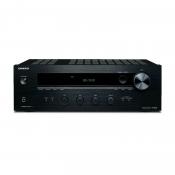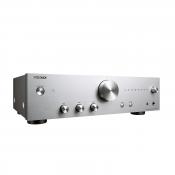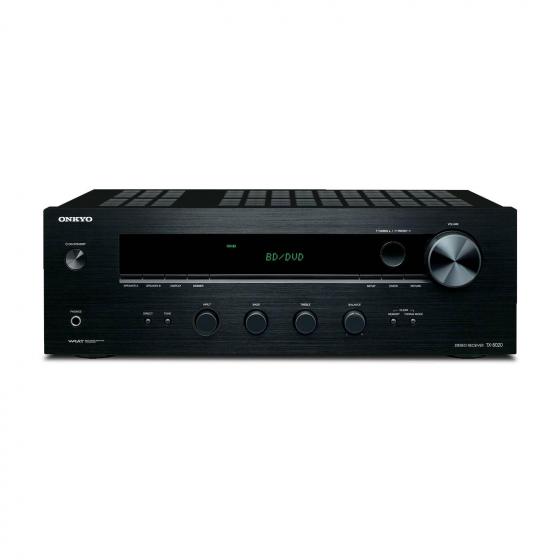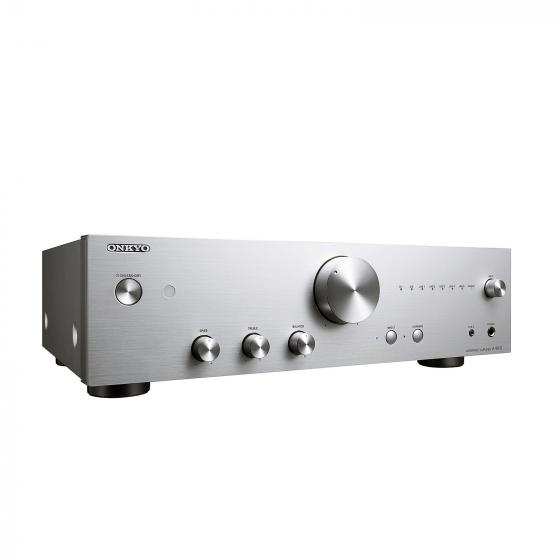Product Comparison: Onkyo TX-8020 vs Onkyo A-9010
This site is a free online resource that strives to offer helpful content and comparison features to its visitors. Please be advised that the operator of this site accepts advertising compensation from certain companies that appear on the site, and such compensation impacts the location and order in which the companies (and/or their products) are presented, and in some cases may also impact the scoring that is assigned to them. The scoring that appears on this site is determined by the site operator in its sole discretion, and should NOT be relied upon for accuracy purposes. In fact, Company/product listings on this page DO NOT imply endorsement by the site operator. Except as expressly set forth in our Terms of Use, all representations and warranties regarding the information presented on this page are disclaimed. The information which appears on this site is subject to change at any time. More info








- At any rate, 50 watts is 50 watts, the TX-8020 is every bit as powerful as my old Onkyo rated at the same power, they both are just as loud.
- 50 watts per channel is enough juice to drive speakers that will fill a small to mid-size room with reasonable volume levels
- The sound of this unit is pretty good, but with only 50 watts per channel, it is definitely only for small rooms. If all you need are bookshelf speakers, this unit would be fine
- It's 50 watts per channel, but that is more than enough for my small 6'x10' workshop... So far, it sounds great, and I am a Musician and picky about my sound, and this is actually better that my workshop needs.
- This receiver just didn't have the punch I was expecting from a 50 WPC receiver. Maybe I was expecting too much, but the sound just isn't there for me. Poor bass response and it distorts too much at higher volume levels.
- The shortcoming is in the bass reproduction, which is totally inadequate for a unit which purports to produce 50 watts per channel (8 ohms).
- This has the power to work with lots of equipment that need a powerful receiver
- It's simple quality 2 channel with good clean neutral dac. Has tons of power don't let the 44w-channel at 8ohm fool you. It pushes my ineffective speakers very well no sweat no heat
- For pure high quality 2 channel stereo sound, coupled with high quality speakers, this amplifier delivers. I've owned it for a couple of years and it has performed fantastic.
- I was a bit disappointed in that it feels somewhat cheap however. The large volume control is sharp edged and slightly wobbly and the input selector detent isn't well defined.
- Bad experience,both channels a and b on the bottom speaker jacks don't function.i had to split my 2 speakers to their own channel for it to work.i also ensured the fader was at center.once up and running I didn't like the sound at all and about 12 o'clock my speakers would distort pretty bad












- The iOS / Andriod Onkyo Remote App is AWESOME (downloadable from App store)
- I can change stereo inputs, volume, etc. from my phone.
- This unit can replace a SONOs box if you're interested in streaming Spotify, Pandora, Tune-in, etc. as well as BLUETOOTH from your phone or laptop.
- Digital connectivity through Toslink/coaxial inputs
- Support for USB drives is a welcome addition
- Movement of volume control not proportional to increase in sound volume; it works fine... it's just... weird.... kind of
- Menu screen and configuring isn't very smooth
- Antennas on back of receiver are flimsy and look unattractive
- Nice features with the built-in high quality DAC. Good mid-range and bass. Very clean.
- If you have a matching Onkyo network-attached source device (such as the C-N7050) attached via RI, you can control input, volume, mute and power with the Onkyo smartphone app.
- I liked it, it was powerful, but lacks features.
- The 1990's remote could have been 6 buttons. Instead isn't a brick with a bunch of buttons that do nothing.
- The remote is pretty awful though, it's generic, so most of the controls on it aren't even for this amp.
- Best improvement was in internet usage. I use it a lot for streaming music from web services, and my own server via DLNA. I have had no interruptions or drops of service with this unit.
- It was easy to hook up all connections and the manual was clear.
- No problems connecting to my wireless network
- Connects to everything I've tried with little friction. Can take a minute or to connect to blutooth or the network, but once it does it works great.
- Odd base on the binding posts makes bare-wire speaker connections tricky (banana plugs are a snap)
- Bluetooth similarly bad reception with interrupts even at close distance
- It has all the back panel hookups you need. The layout and quality of the front panel controls are excellent.
- It has an optical outlet connection to use with whatever your equipment allows. I have an Apple TV to play music and watch streaming video. The sound quality improvement through the optical cable is obvious.
- This has the power to work with lots of equipment that need a powerful receiver. I put a bluetooth adapter in the AUX and now I can use it for playing tunes off the computer, ipad, and phone so that is also awesome!
- There are no switched/unswitched power outlets, no sub out, and only one set of speaker outputs so it is very bare bones.
- The only drawback is that the inputs are simply marked Line 1, 2, 3, 4, 5, instead of CD, phono, AUX, ect but as long as you remember what's connected to what input you should be fine.


Popular Comparisons
































